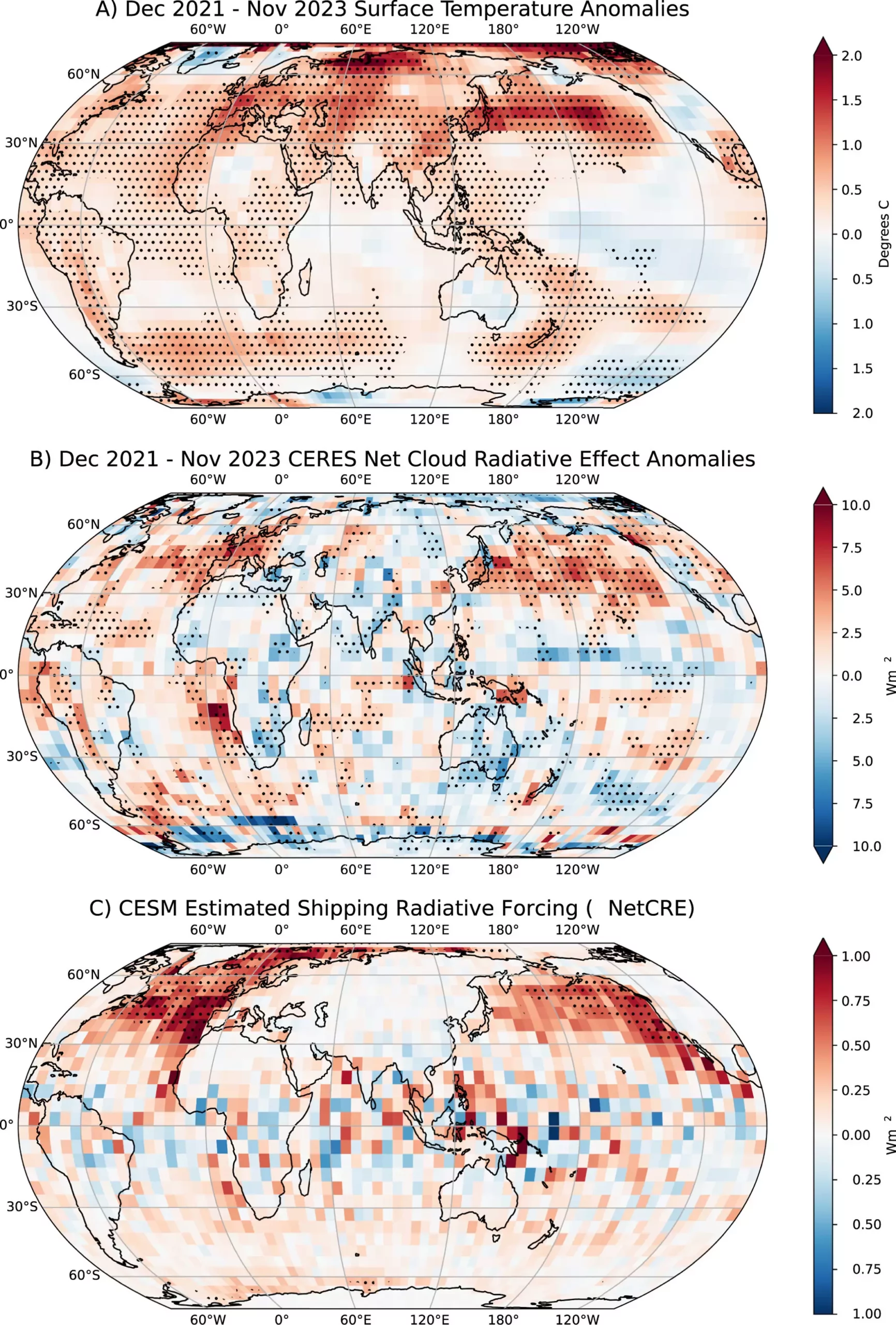In recent years, discussions surrounding climate change often center on rising temperatures and extreme weather patterns. As scientists work tirelessly to unravel the complexities of our planet’s climate system, a new study sheds light on an intriguing phenomenon concerning the interplay between shipping emissions and global warming. A significant fraction of the warmth experienced in 2023—around 20%—has been attributed to reductions in sulfur emissions, primarily stemming from the shipping industry. Understanding this relationship is crucial not only for assessing current climate impacts but also for informing future regulatory decisions.
Regulatory Background: The Shipping Industry’s Shift
The International Maritime Organization (IMO) implemented stringent regulations in 2020, mandating an approximate 80% reduction in the sulfur content of fuels used in maritime shipping. This regulatory shift aimed to enhance air quality, especially in port regions that have grappled with pollution. However, the broader implications of these changes extend well beyond local air quality improvements. Reducing sulfur dioxide emissions has inadvertently contributed to changes in atmospheric chemistry and cloud formation, leading to unexpected meteorological consequences.
When ships burn fuel containing high levels of sulfur, sulfur dioxide is released into the atmosphere. Under the influence of sunlight, this gas can lead to the formation of sulfate aerosols, which play a dual role in climate dynamics. These sulfate particles not only contribute to acid rain but also enhance cloud formation. The presence of more aerosols typically leads to the creation of clouds that reflect sunlight, providing a cooling effect on the planet.
However, the recent regulatory changes have drastically cut down on the number of ship tracks—visible linear clouds formed from condensed water vapor around aerosol particles—by an estimated 25 to 50%. Consequently, with fewer reflective particles in the atmosphere, less sunlight is obstructed, leading to a warming effect. This complex feedback loop presents a stark reminder of how anthropogenic activities can yield unexpected and counterproductive climate outcomes.
An innovative approach was employed in this study, incorporating machine learning techniques to analyze over one million satellite images. By quantifying the decline in ship tracks and correlating it with temperature changes, researchers were able to identify that areas with a decrease in aerosol presence often showcased a rise in temperature. The authors’ endeavor not only reinforces the significance of atmospheric particles in regulating climate but also highlights the potential volatility of the Earth’s temperature in response to rapid regulatory changes.
Broader Climate Dynamics: The Interplay of Factors
While the connection between sulfur emissions and warming is compelling, the researchers caution against oversimplifying the relationship. Numerous factors, including oscillating climate patterns and greenhouse gas concentrations, contribute to global temperature changes. Thus, the observed warming cannot solely be attributed to shipping emissions.
Importantly, sulfur aerosols act as a masking agent, curtailing the full effects of greenhouse gas emissions. Their relatively short lifespan in the atmosphere means that, should their concentrations drop significantly, we may witness a rapid surge in warming. As Earth scientist Andrew Gettelman aptly notes, the acceleration of climate change from “cleaning up air quality faster than limiting greenhouse gas emissions” could have drastic implications.
The Path Forward: Addressing Uncertainties
The study underscores a pressing need for improved observational data and climate modeling that accounts for the interdependencies of oceanic and atmospheric processes. With more comprehensive insights into shipping activities and emissions, researchers can better predict climatic responses to regulatory changes.
Moreover, the findings underline the importance of considering both immediate and long-term climate strategies. While reducing sulfur emissions improves air quality and benefits human health, policymakers must remain vigilant about their wider implications on climate.
As the world grapples with the realities of climate change, the interactions between air quality regulations, shipping practices, and atmospheric conditions offer critical lessons. The reduction of sulfur emissions may have been a well-intentioned effort to combat local pollution; however, its unintended warming consequences highlight the complexity of climate dynamics. Moving forward, a balanced approach that considers both health and environmental impacts will be key in crafting effective climate policies that mitigate the effects of global warming while ensuring cleaner air for all.


Leave a Reply